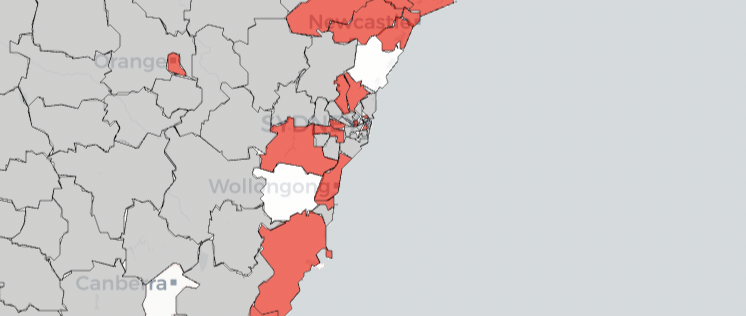When 127 NSW local councils go to the polls over the coming weeks, most voters will just get to vote for their local councillors on one ballot. Some others will also get a ballot for a referendum or poll, but there’s also a minority of councils where voters will get a direct say over their mayor.
There is a split in NSW local councils between those where the mayor is elected by the council for a one- or two-year term (the two-year term is a new innovation but is already reasonably common), or where the mayor is elected by the whole council.
35 councils will directly elect their mayor in the next month, with the other 94 leaving the decision to the council.
There are three councils which will be switching to direct election after a constitutional referendum at the previous election: Dungog, Shellharbour and Wollondilly. In North Sydney, which previously had a direct mayoral election, they will be holding their first election without a direct-elected mayor after a 2017 referendum decided to change the structure. This means a net increase of two councils using this system.
There are also three other councils which will be holding referendums about switching to direct election in 2021: Bega Valley, Ryde and Wagga Wagga. Griffith is considering a switch to a council-elected mayor. I am planning another blog post looking at the pros and cons of direct mayoral election, but today I will stick to mapping out where the system is used.
I have mapped out which councils are directly electing their mayor, on this map below:
There are some obvious geographic trends. Every council in the lower Hunter directly elects the mayor, with Dungog joining its neighbours at this election. It is also a popular method on the south coast. Every council except one from Wollongong to Eurobodalla uses direct mayoral election. If Bega Valley votes ‘yes’ they will join this trend.
There are some patterns in Sydney, with neighbouring councils often using the same method. The Hills and Hornsby in the north, and Fairfield and Liverpool in the south. There is also a cluster around the lower Parramatta River and the lower north shore. If Ryde votes ‘yes’, there will be a contiguous group of five councils stretching from Burwood to Willoughby, as well as the two neighbouring councils further north and Mosman not too far away. Prior to the change in North Sydney, three out of four councils on the lower north shore used direct election. And then there is the City of Sydney on its own.
Direct election is also quite popular on the north coast. A contiguous block of five councils between Port Macquarie-Hastings and Coffs Harbour all directly elect the mayor, and another block of four councils in the far north use the same system. That is nine out of ten councils along the coast from Byron to Port Macquarie. Currently the system is very rare inland, with only Orange, Broken Hill, Griffith and Uralla using the system, although Griffith is considering a switch away and Wagga Wagga is considering switching to the system.
The use of direct election suffered setbacks in the Greater Sydney region with the amalgamations. No newly-created council uses a directly-elected mayor, although former Inner West mayor Darcy Byrne had proposed a referendum on a change. Warringah and Manly councils did directly elect the mayor before they were amalgamated into Northern Beaches, and Canterbury also had a directly-elected mayor. Queanbeyan was also amalgamated, changing the mayoral election system for that area.
Overall the system seems to be gaining slightly in popularity despite the decline in council numbers. 37 councils used the system in 2011-12. Four of those councils have since been amalgamated with the new councils using council election of mayor. The number stayed steady at 33 in 2016-17, but it’s now climbed to 35.
I’ll be back soon with an analysis of the final nominations, and will be back next week with some analysis of how the direct mayoral election system works, in light of the four referendums on the topic to be held alongside the elections.




Here at Kempsey Shire Council, the Voters get the chance to Elect the Mayor, which is very good. The present Mayor is not liked by many, and many residents are hoping the present Mayor is Voted out along with most of the Councillors.
Comments are closed.